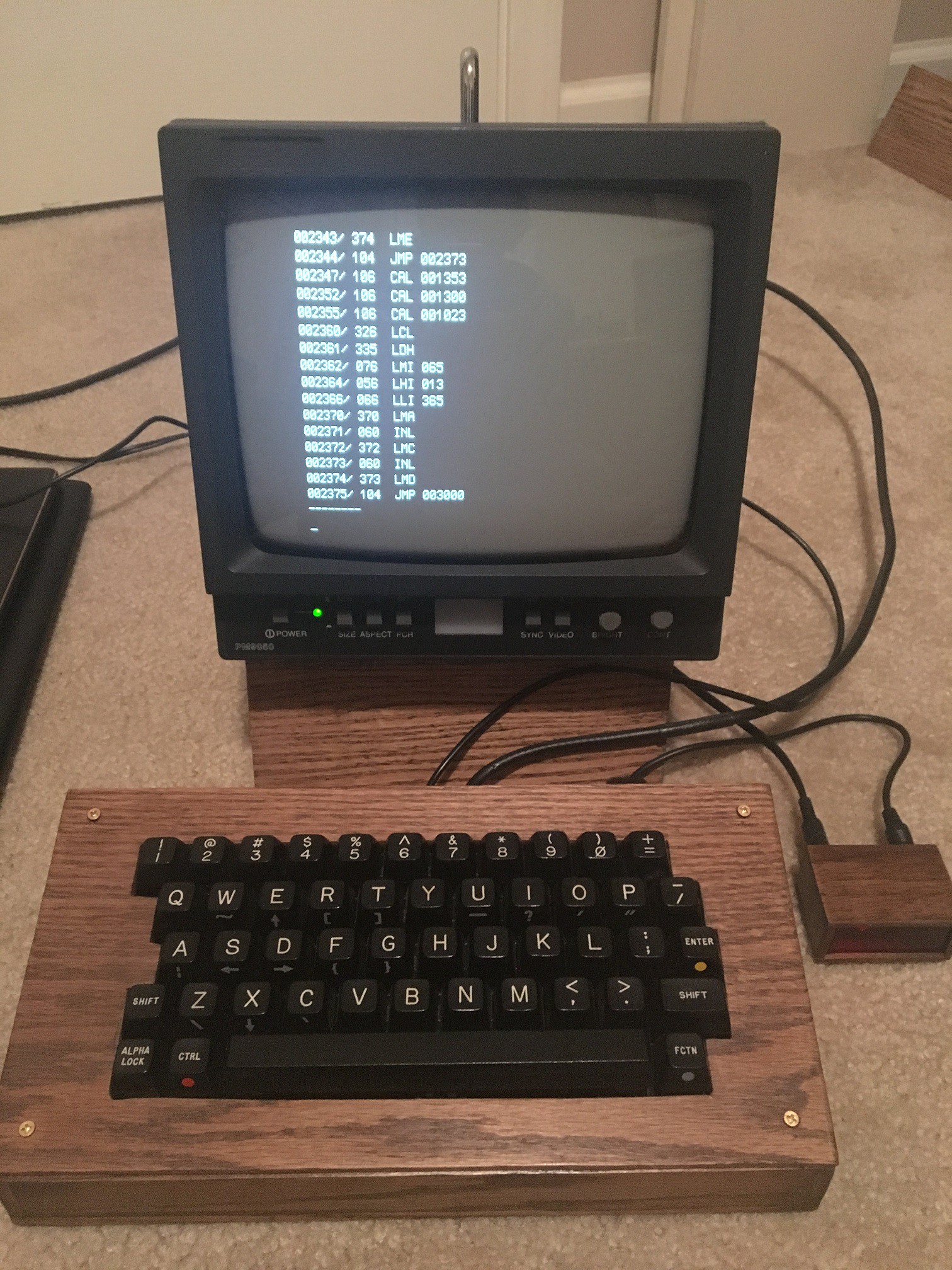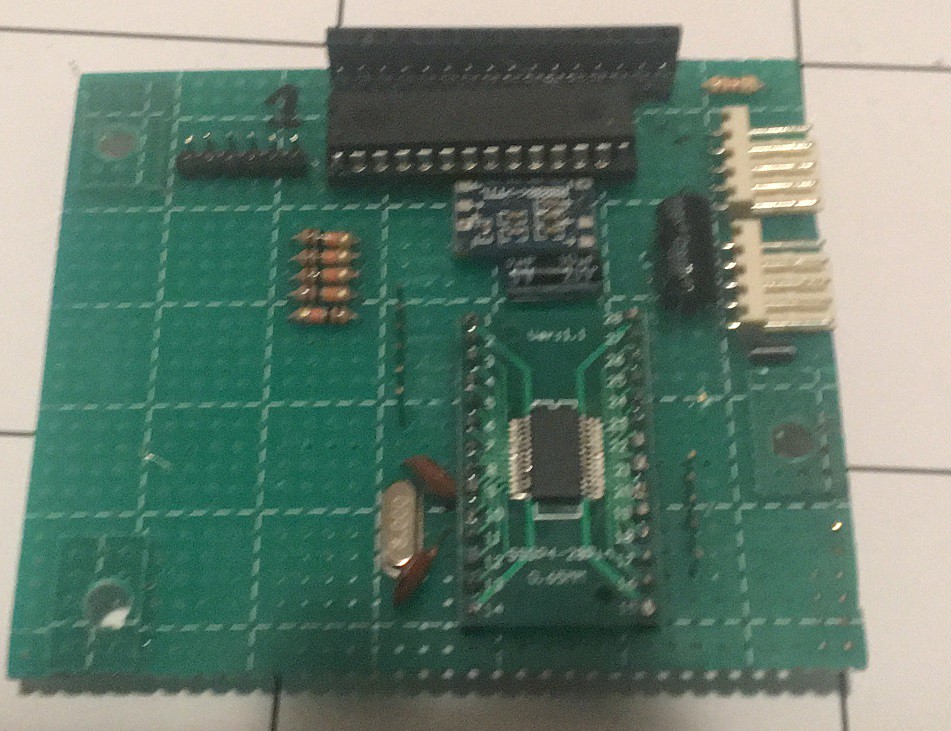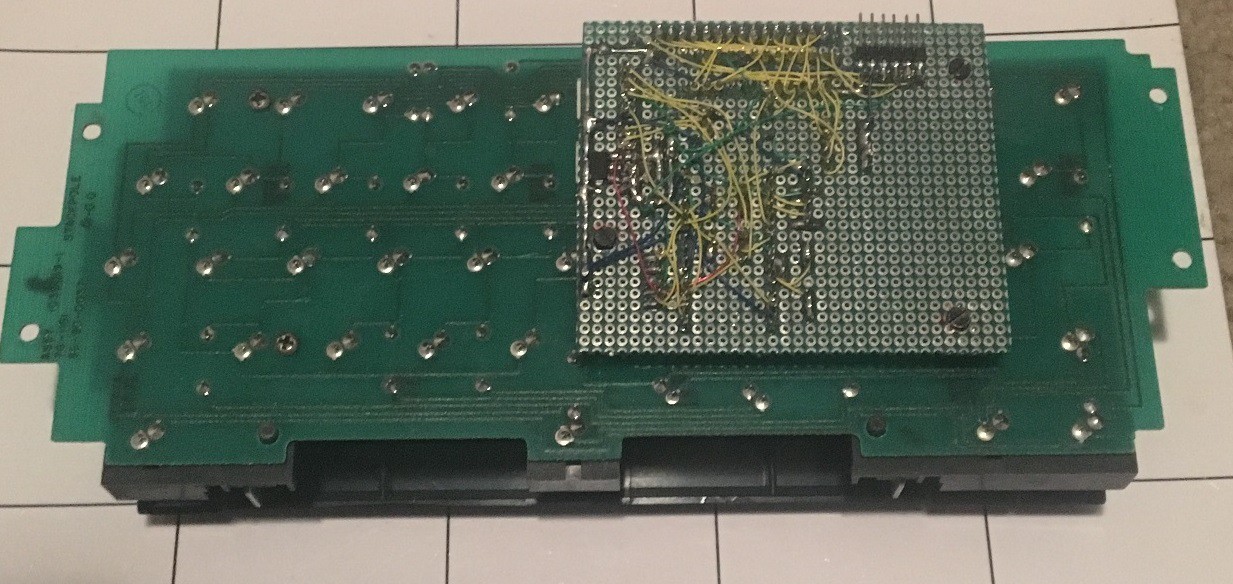The current software (here) runs SCELBAL, Galaxy, Shooting Stars, Mike Willegal's small monitor and the MIL monitor as Dave Dunfield transcribed it. I also added a "CAPS ONLY" menu setting for terminals that didn't have such a function.
I wanted a period-looking keyboard for this, so, I built a small terminal from Geoff Graham's site, http://geoffg.net/terminal.html, which utilizes a PIC32MX250F128B (mine is in the surface mount package with an adapter). This has PS/2 keyboard input, but I did not use this except to set it up. The excellent firmware auto-detects VGA or composite video. It can do NTSC or PAL via PS/2 keyboard driven menu settings; I am using PAL because this allows more characters on the screen and my monitors support this.
I used a PIC16F883 as a keyboard scanner for a TI-99/4A keyboard (NO WORKING, GOOD CONDITION TI-99/4A COMPUTERS WERE HARMED IN BUILDING THIS). The keyboard puts out serial at 9600 through a Chinese sourced RS-232 converter, and the terminal chip receives serial data at 9600 through the same converter. The scanner supports the quirky, but very compact TI keyboard with all control/function characters, CAPS LOCK, and also auto-repeats. It has at least two key rollover, which is good enough for me. The original icky TI cable was replaced with pins that connect to a socket on my wire-wrapped board; short M3 posts were screwed and glued into the back of the TI keyboard in order to secure the board. The entire shebang runs from a 1A USB wall wart, dropped to 3.3V via a 1117. The case is 1/4" oak.
I'm pretty certain that my RS-232 converter uses a counterfeit chip; but I have not ever had a problem with these running at 3.3V. 5V has in my experience immediately wiped them out although the original chip specs claimed they would operate on 3.3-5V.
You always read that you need a crystal for RS232 asychronous communication, but in reality it probably has a tolerance of +/- several percent. Using the PIC's fairly high tolerance internal oscillator worked fine, and I have built several period-looking homebrew keyboards this way with no problems up to 9600 baud.



Discussions
Become a Hackaday.io Member
Create an account to leave a comment. Already have an account? Log In.